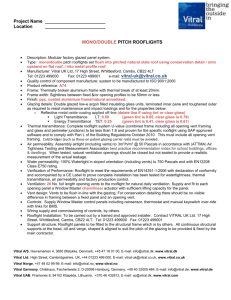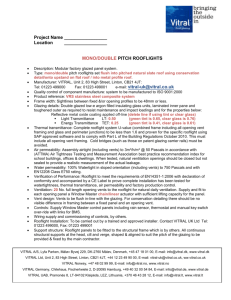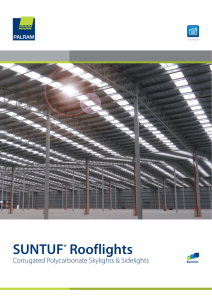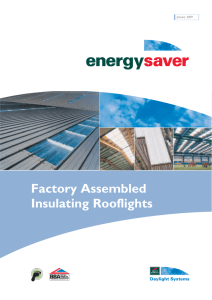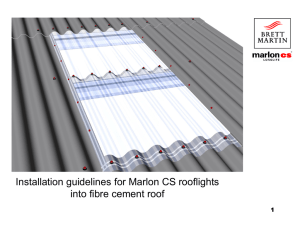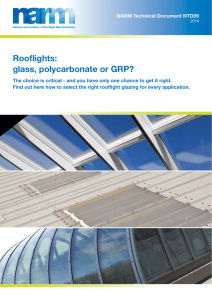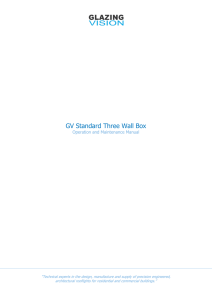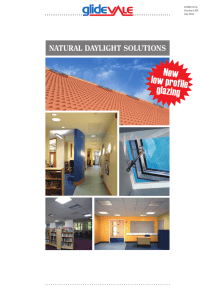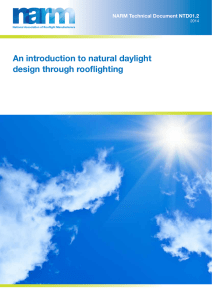RGPR 101
advertisement
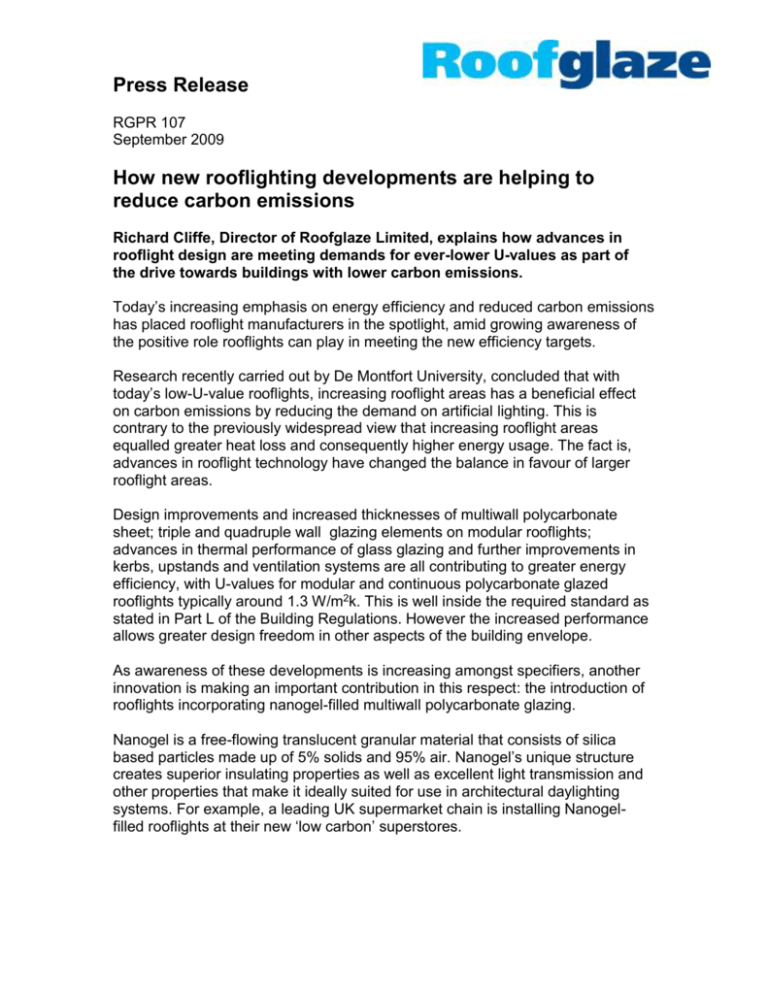
Press Release RGPR 107 September 2009 How new rooflighting developments are helping to reduce carbon emissions Richard Cliffe, Director of Roofglaze Limited, explains how advances in rooflight design are meeting demands for ever-lower U-values as part of the drive towards buildings with lower carbon emissions. Today’s increasing emphasis on energy efficiency and reduced carbon emissions has placed rooflight manufacturers in the spotlight, amid growing awareness of the positive role rooflights can play in meeting the new efficiency targets. Research recently carried out by De Montfort University, concluded that with today’s low-U-value rooflights, increasing rooflight areas has a beneficial effect on carbon emissions by reducing the demand on artificial lighting. This is contrary to the previously widespread view that increasing rooflight areas equalled greater heat loss and consequently higher energy usage. The fact is, advances in rooflight technology have changed the balance in favour of larger rooflight areas. Design improvements and increased thicknesses of multiwall polycarbonate sheet; triple and quadruple wall glazing elements on modular rooflights; advances in thermal performance of glass glazing and further improvements in kerbs, upstands and ventilation systems are all contributing to greater energy efficiency, with U-values for modular and continuous polycarbonate glazed rooflights typically around 1.3 W/m2k. This is well inside the required standard as stated in Part L of the Building Regulations. However the increased performance allows greater design freedom in other aspects of the building envelope. As awareness of these developments is increasing amongst specifiers, another innovation is making an important contribution in this respect: the introduction of rooflights incorporating nanogel-filled multiwall polycarbonate glazing. Nanogel is a free-flowing translucent granular material that consists of silica based particles made up of 5% solids and 95% air. Nanogel’s unique structure creates superior insulating properties as well as excellent light transmission and other properties that make it ideally suited for use in architectural daylighting systems. For example, a leading UK supermarket chain is installing Nanogelfilled rooflights at their new ‘low carbon’ superstores. With a U-value of just 0.89 W/m2K, Nanogel-filled rooflights provide a twofold contribution to reducing carbon emissions. Firstly, heat loss is minimised, as the thermal performance of the rooflights is virtually the same as the surrounding roof construction. Secondly, excellent light transmission and reduced solar gain allow the use of large glazed areas. This in turn minimises the requirement for artificial light, thereby further reducing energy consumption. Compared with conventional insulation materials, Nanogel (Aerogel) provides more than double the insulation value (see table below). Another outstanding advantage of Nanogel-filled rooflights, is the quality of light provided to the building interior. Nanogel®-filled glazing provides high levels of diffused lighting with minimal shadows or ‘hot spots’ – to create a pleasant and comfortable internal environment. Nanogel®-filled glazing also provides superior acoustic performance, with a 25% noise reduction at 1,000 Hz. This property makes a further contribution to the quality of the internal environment. From a practical point-of-view, Nanogel-filled rooflights score highly, too. Weighing under 4 kg/m2, compared with over 30 kg/m2 for a typical double glazed glass system, they are suitable for a wide range of roof constructions and are ideal for retrofits and upgrades. The glazing elements are delivered to site pre-assembled, so installation is quick and simple – as with any multi-wall polycarbonate rooflight. In conclusion, the variety of current rooflight technologies available to the specifier, provides solutions suitable for every kind of building. Importantly, thanks to the ingenuity of materials manufacturers and rooflight designers, today’s rooflight specifier has greater design freedom than ever before, despite tightening legislation relative to energy performance. Based in St Neots, Cambridgeshire, Roofglaze Limited is one of the UK’s leading providers of rooflights and skylights, offering a complete range from modular domes and pyramids, to continuous barrel vaults, ridgelights, lantern lights, bespoke designs and Nanogel-filled rooflights. For further information, visit www.roofglaze.co.uk Ends - 626 words Photo captions: Nanogel performance table: Nanogel has more than double the insulation value of conventional insulation materials Nanogel rooflight: Nanogel-filled glazing provides high levels of diffused lighting with minimal shadows or ‘hot spots’. For editorial information, please contact Paul Bennett on 01280 821400 or email paul@bennettandpartners.co.uk
